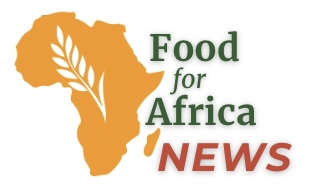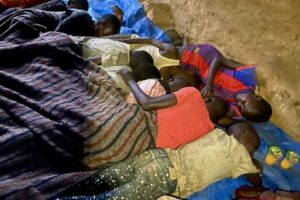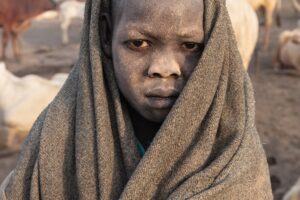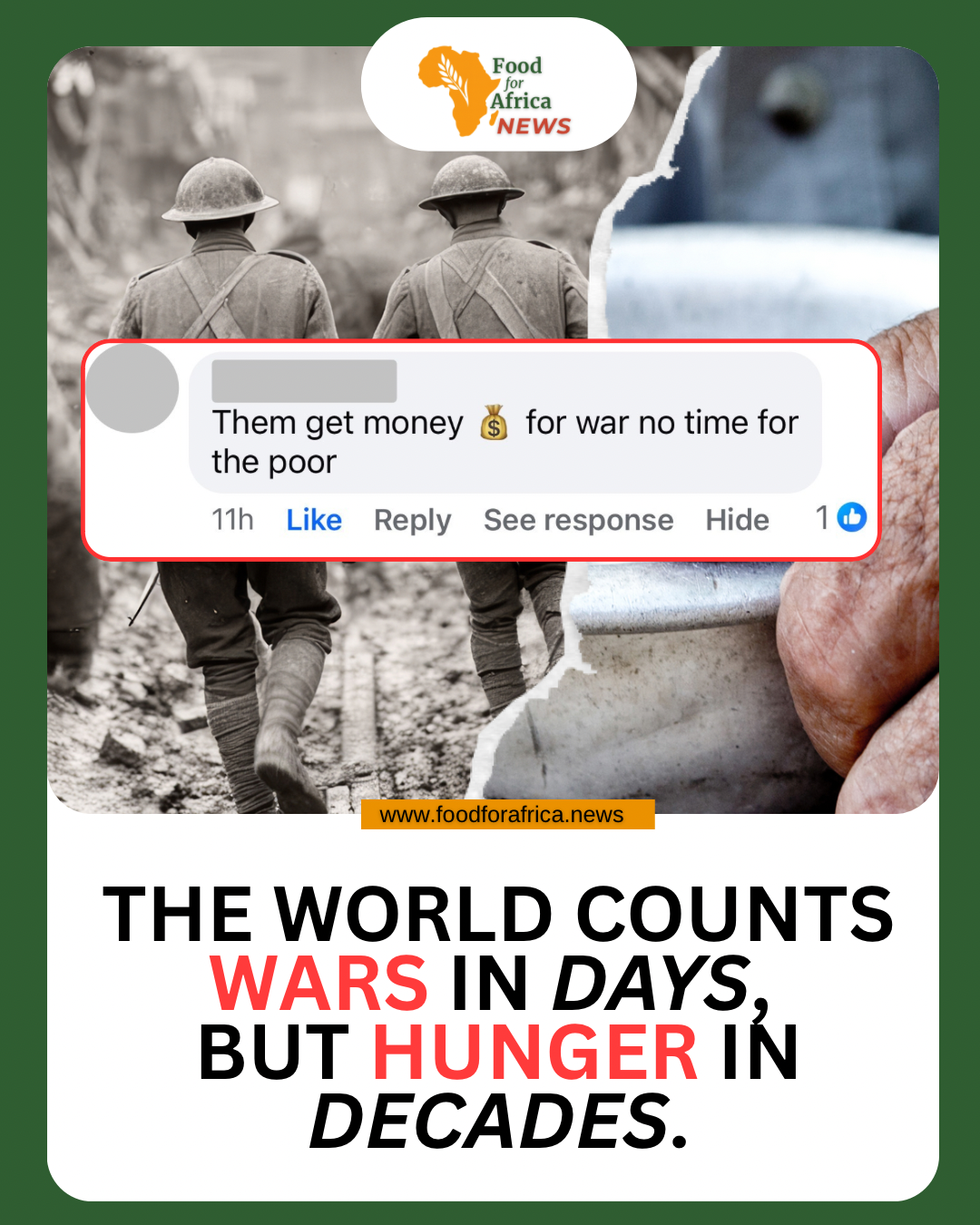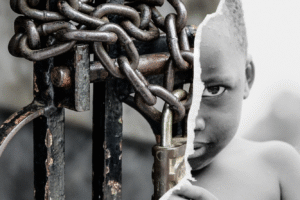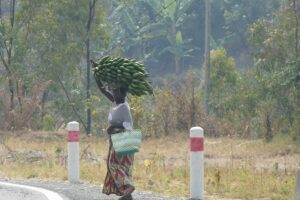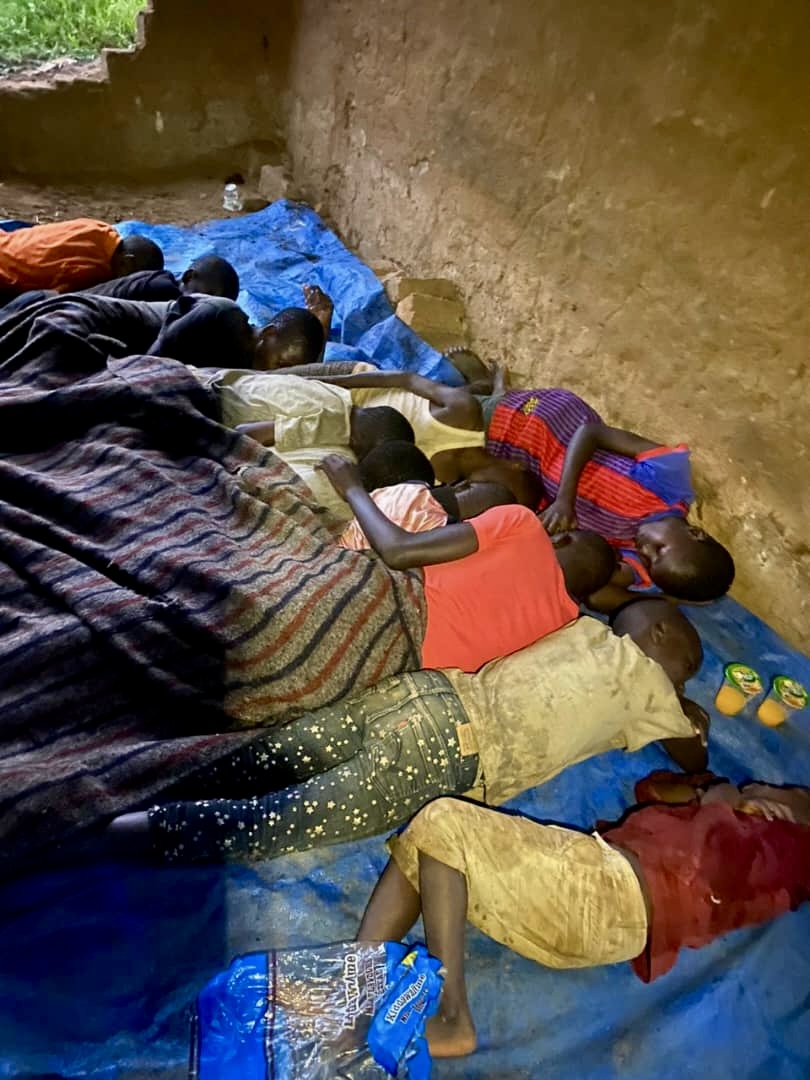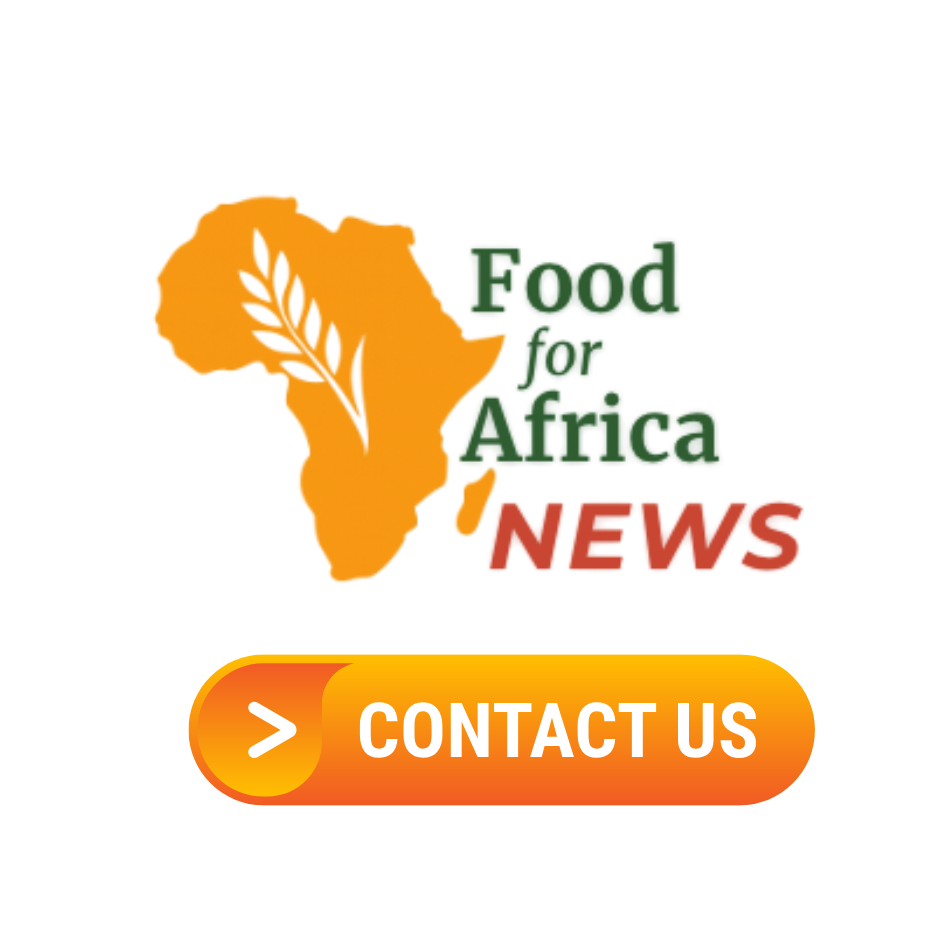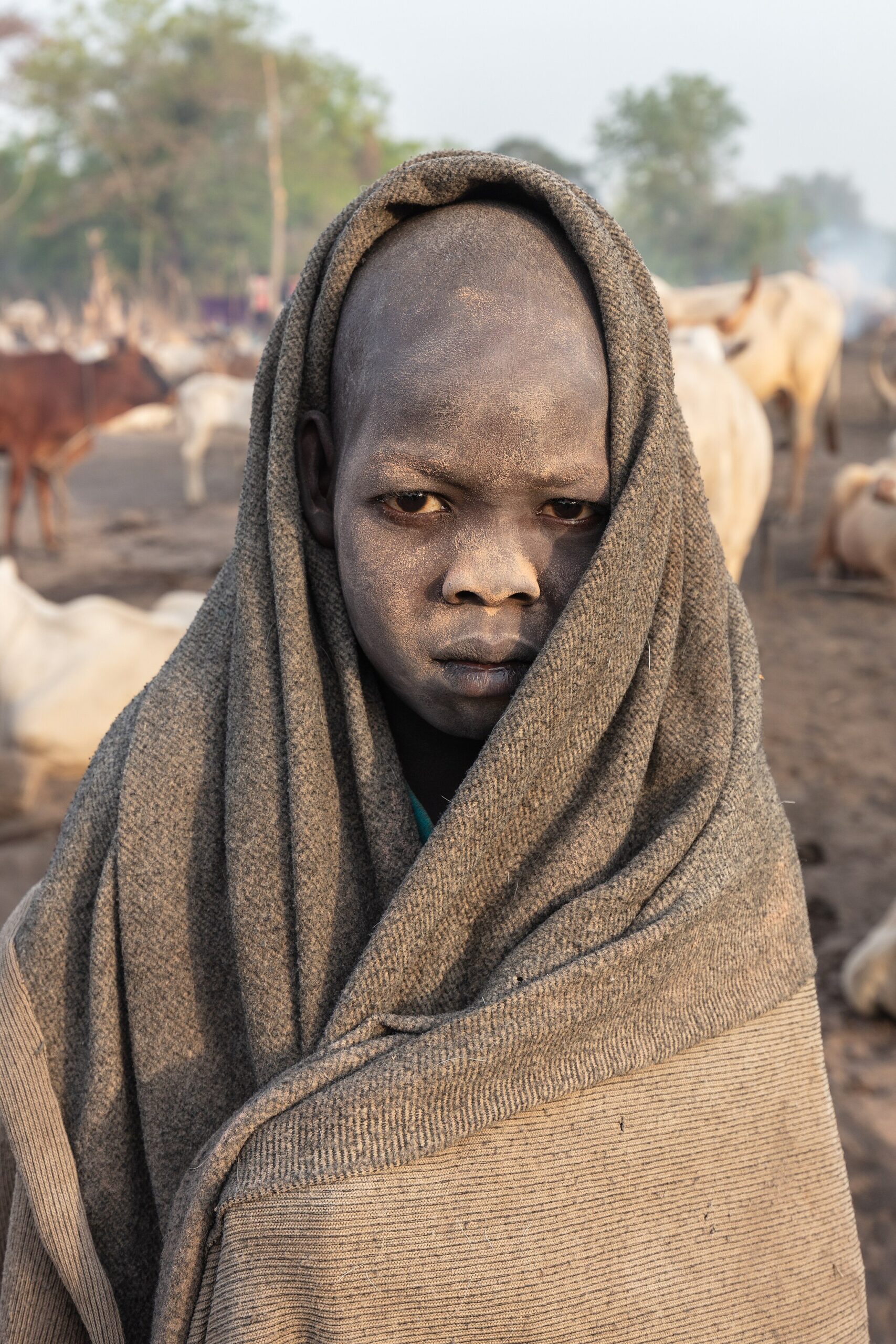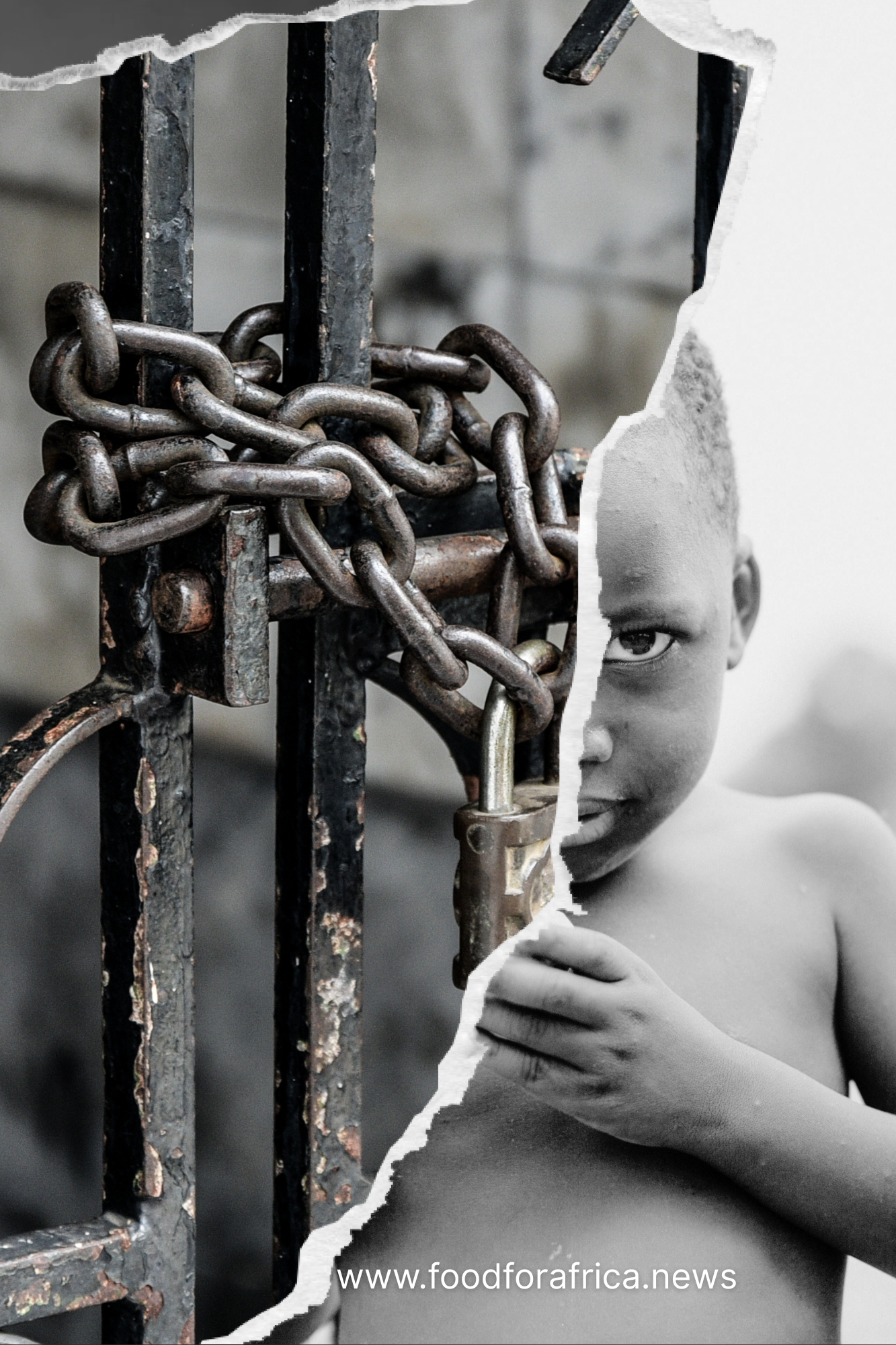Photographs are taken on the ground in Uganda by Food for Africa News contributors, documenting the true conditions of the children featured.
MITYANA, UGANDA – In a crumbling shed at the edge of a small farming village, a dozen children without parents huddle together at night under torn blankets. Among them is a three-year-old girl, her head recently shaved by a neighbor to remove lice, and her four-year-old brother.
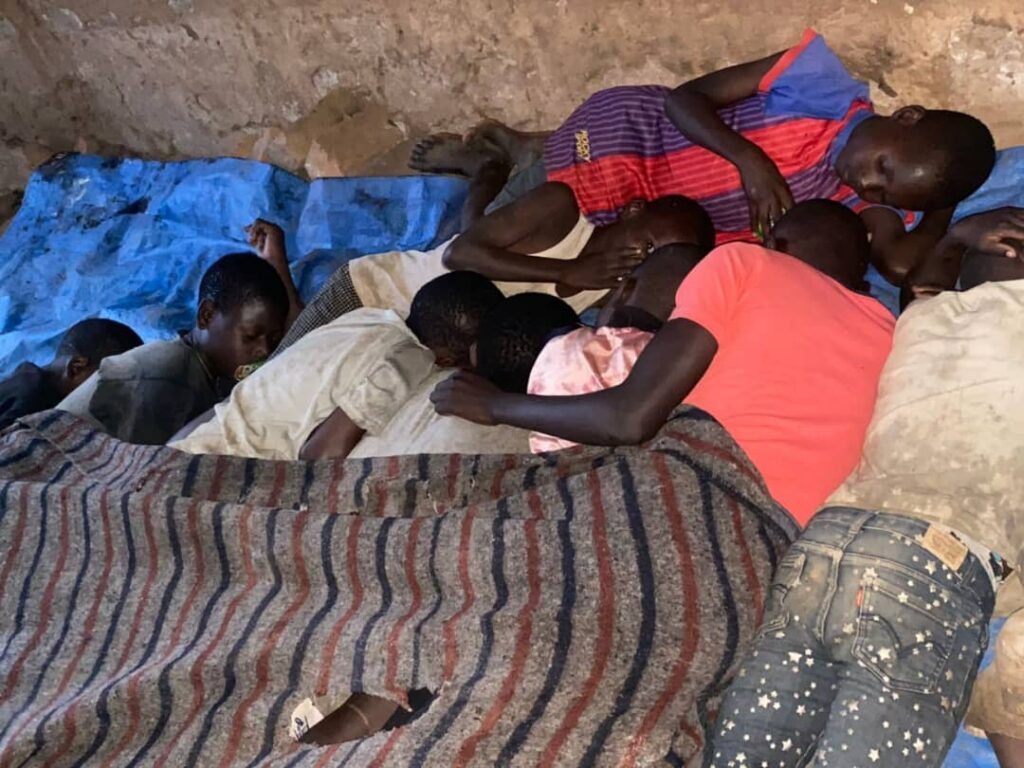
Photo attribution: Taken by Food for Africa News contributor. Orphaned children sleep huddled together in an abandoned shed in Mityana, Uganda.
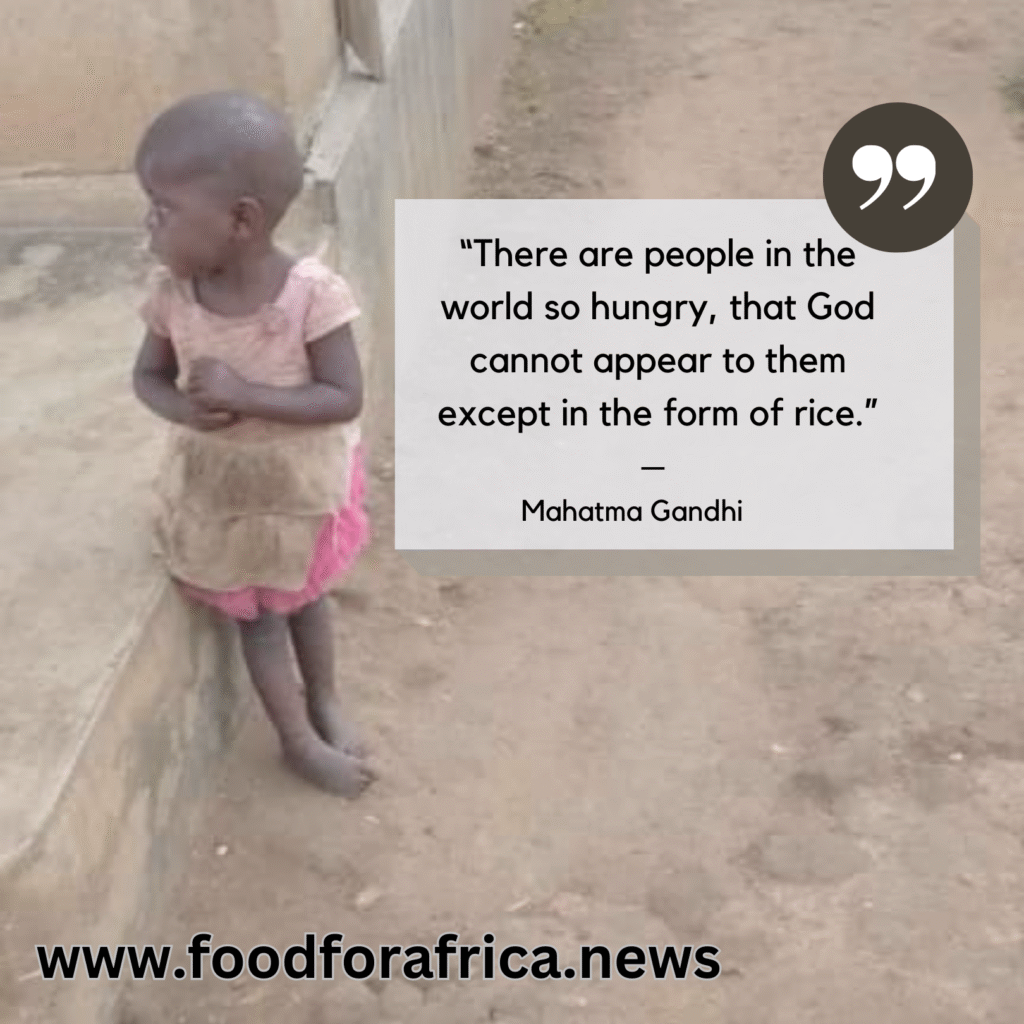
Photo attribution: Food for Africa News Contributor. A three-year-old girl, featured in today’s story, searches daily for food with her brother.
Their mother left months ago for the Congo, to work in the mines far from home. It is dangerous work, but it is the only way she can send food back. In her absence, the children wander door to door begging for scraps. Some days they eat. Some days they don’t. Both have ringworm, and they sleep on a bare floor surrounded by gaps in the walls where cold air seeps in at night.
Their father can’t bear the weight of it all. Once a farm laborer, he has turned to drinking and gambling. Neighbors say he has given up, unable to face the hopelessness of watching his family go hungry. The children are left for the village to watch over as best it can.
A young man from the community, Lukenge Ibriham, has stepped in to help them and other orphaned children in the village. But he too struggles to find enough food.
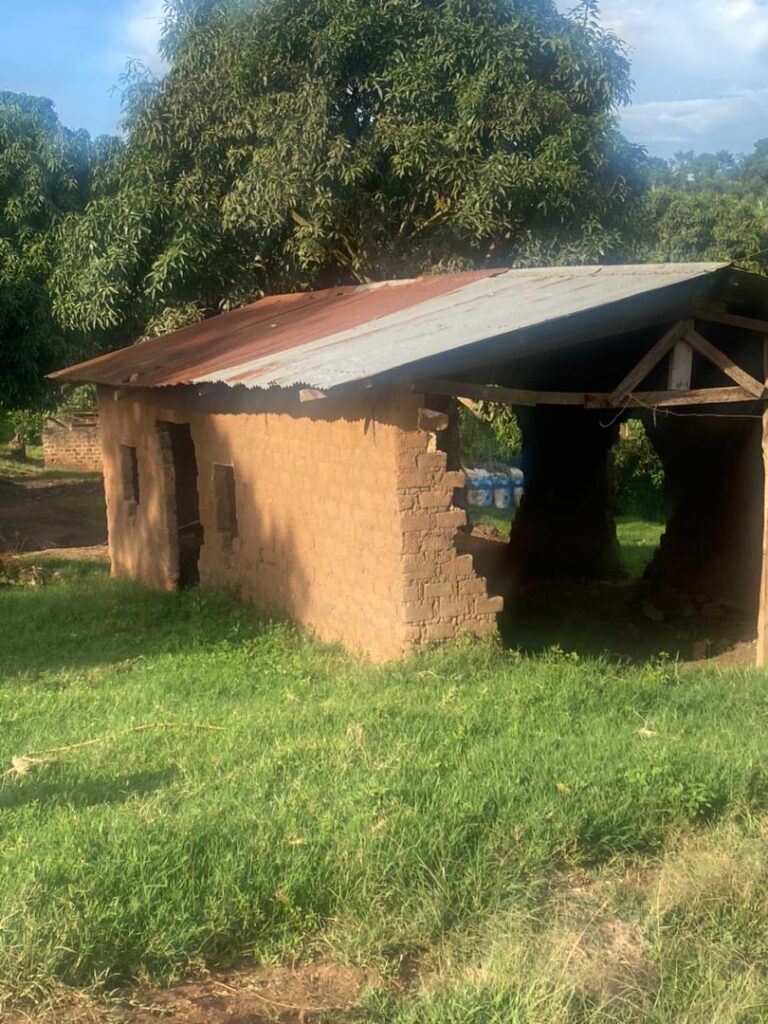
The only place to shelter the children is an abandoned shed, its walls broken and roof rusted. It offers little protection, but it is all they have against the scorching sun, heavy rains, and strong winds that sweep across Uganda.
It’s a story that could be told in countless villages across Africa.
Millions Face Hunger in Uganda and Across the Continent
Uganda’s hunger crisis shows up clearly in the numbers. In 2020, more than two out of three people in the country did not have enough to eat, and one in five faced severe hunger. By 2022, a World Bank survey found almost half of all households were struggling to find food. In 2023, the UN’s IPC reported that nearly half the people in Karamoja, one of the hungriest regions, were in acute food crisis. These numbers show that hunger in Uganda is not just local or temporary. It is deep, widespread, and getting worse.
From Uganda to Sudan, Somalia, Mali, and beyond, hunger is tightening its grip. In West and Central Africa alone, more than 36 million people already struggle to meet basic food needs, a number that could swell to over 52 million by the lean season. In Sudan’s North Darfur, famine was confirmed late in 2024 in Zamzam camp, which houses hundreds of thousands of displaced people. Since then, only one aid convoy has reached the camp. In El Fasher, families endure siege-like conditions, with almost no food entering the city.
The Horn of Africa, including Somalia, Ethiopia, and Kenya, is facing one of its worst humanitarian crises in decades. Oxfam reports that more than 45 million people across the Horn, East, and Central Africa now need urgent humanitarian assistance, while 28 million are at risk of extreme hunger in Ethiopia, Somalia, Kenya, and South Sudan alone. The agency warns that without immediate action, the crisis will deepen, leaving millions more at the edge of famine.
Why It’s Happening
The causes are many, but they feed into each other:
• Conflict has torn apart farming communities, cut off trade routes, and pushed millions from their homes. Sudan, South Sudan, and the Democratic Republic of Congo are among the hardest hit.
• Climate change has brought more frequent and extreme droughts and floods, wiping out crops and livestock.
• Economic collapse in several countries has sent food prices soaring, while wages have stayed the same or disappeared entirely.
• Mass displacement means more people competing for limited aid and local resources.
Aid Efforts and Shortfalls
According to the World Food Programme, aid cuts are spreading across the Central Sahel and Nigeria, with as many as two million people set to lose food and nutrition support in April 2025 because of empty pipelines. WFP warns its resources will fall by more than a third compared to last year, forcing reductions that could strip life-saving assistance from 16.7 million people worldwide. In Sudan, the agency estimates that 24.6 million people are already acutely food insecure, including 1.5 million trapped in the hardest-hit famine zones. The Associated Press reports that in Nigeria alone, WFP’s $130 million appeal has reached only 21 percent of its target, underscoring how financial shortfalls are driving the crisis.
In Sudan, even when food is available, delivering it is dangerous. Aid convoys face armed checkpoints, and some regions are completely cut off. (Food for Africa News: Sudan: A War that Starves)
The Road Ahead
The solutions aren’t quick, but they are clear:
• Immediate funding to get food where it’s needed now.
• Safe humanitarian access to war-torn areas.
• Long-term investment in climate-resilient farming, stable economies, and peace.
UNICEF warns that if nothing changes, by 2030 more than 582 million Africans could be chronically undernourished. That means more stories like the one in Mityana: hair shaved to fight lice, stomachs empty, mothers gone to dangerous jobs, and fathers disappearing into drink and despair.
Until then, the shed in Mityana won’t be the only place where children fall asleep hungry.
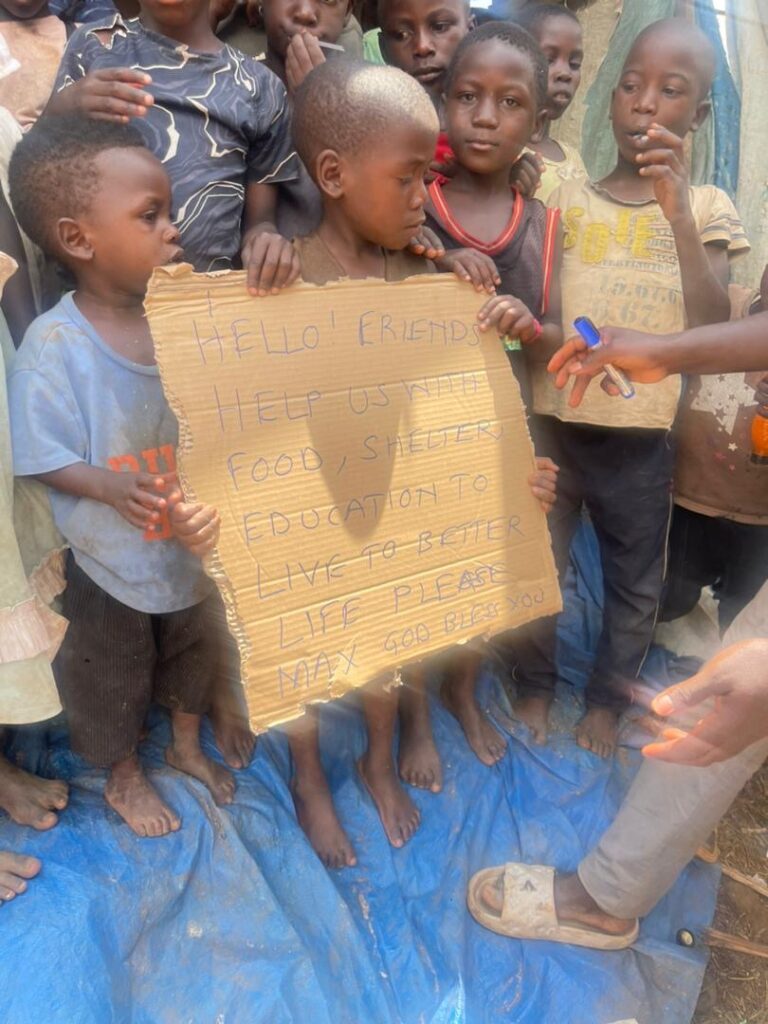
Share your story with us. To learn more about this report, send a news tip, or provide help to the orphaned children of Mityana, contact press@foodforafrica.com or submit an inquiry through the “CONTACT US” form provided below. Clothing, toys, and food are delivered directly to the shed where the children sleep.
Sources
- IPC (Integrated Food Security Phase Classification) – Uganda: Karamoja Food Insecurity Report (April–August 2023)
https://www.ipcinfo.org/ipc-country-analysis/details-map/en/c/1156423 - World Bank – Uganda High-Frequency Phone Survey on Food Insecurity (2022)
https://www.worldbank.org/en/programs/lsms/brief/in-uganda-low-access-to-essential-goods-high-food-insecurity-with-a-slight-improved-conditions-among-the-poorest - PubMed Central – Prevalence of Food Insecurity in Uganda During COVID-19 (2020)
https://pmc.ncbi.nlm.nih.gov/articles/PMC10101418 - Oxfam UK – East Africa: People Facing Hunger Need the World’s Solidarity Now (2023) https://www.oxfam.org.uk/oxfam-in-action/current-emergencies/east-africa-people-facing-hunger-need-the-worlds-solidarity-now
- Oxfam Sweden – Östafrika: Hungerkrisen förvärras (2023) https://oxfam.se/en/ostafrika
- World Food Programme. West and Central Africa Faces Deepening Food Crisis as UN Agencies Call for Enhanced Humanitarian Response. March 2025. Available at: https://www.wfp.org/news/west-and-central-africa-faces-deepening-food-crisis-un-agencies-call-enhanced-humanitarian
- World Food Programme. WFP Forced to Pause Food Distributions in Sudan’s Zamzam Camp as Fighting Intensifies. February 2025. Available at: https://www.wfp.org/news/wfp-forced-pause-food-distributions-sudans-zamzam-camp-fighting-intensifies
- World Food Programme USA. Sudan: WFP Warns People Trapped in El Fasher Face Starvation. April 2025. Available at: https://www.wfpusa.org/news/sudan-wfp-warns-people-trapped-el-fasher-starvation
- United Nations Office for the Coordination of Humanitarian Affairs (OCHA). Sudan Humanitarian Access Snapshot: Al Fasher and Zamzam. April 2025. Available at: https://www.unocha.org/publications/report/sudan/sudan-humanitarian-access-snapshot-al-fasher-and-zamzam-8-april-2025
- United Nations Security Council. Famine Review Committee Confirms Famine in Sudan’s Zamzam Camp. Press Release SC/15784. August 2024. Available at: https://press.un.org/en/2024/sc15784.doc.htm
- World Food Programme. Millions in Central Sahel and Nigeria Risk Food Cuts as World Food Programme Faces Severe Funding Shortfall. April 2025. Available at: https://www.wfp.org/news/millions-central-sahel-and-nigeria-risk-food-cuts-world-food-programme-faces-severe-funding
- World Food Programme. Food Security Impact of Reduction in WFP Funding. March 2025. Available at: https://www.wfp.org/publications/food-security-impact-reduction-wfp-funding
- World Food Programme. Sudan Emergency Overview. 2025. Available at: https://www.wfp.org/emergencies/sudan
- Associated Press. UN World Food Programme Says Nigeria Funding Only 21 Percent Met Amid Rising Hunger. 2025. Available at: https://apnews.com/article/africa-hunger-crisis-nigeria-funding-un-99c18973805fe354ddd6aad6b4493541
